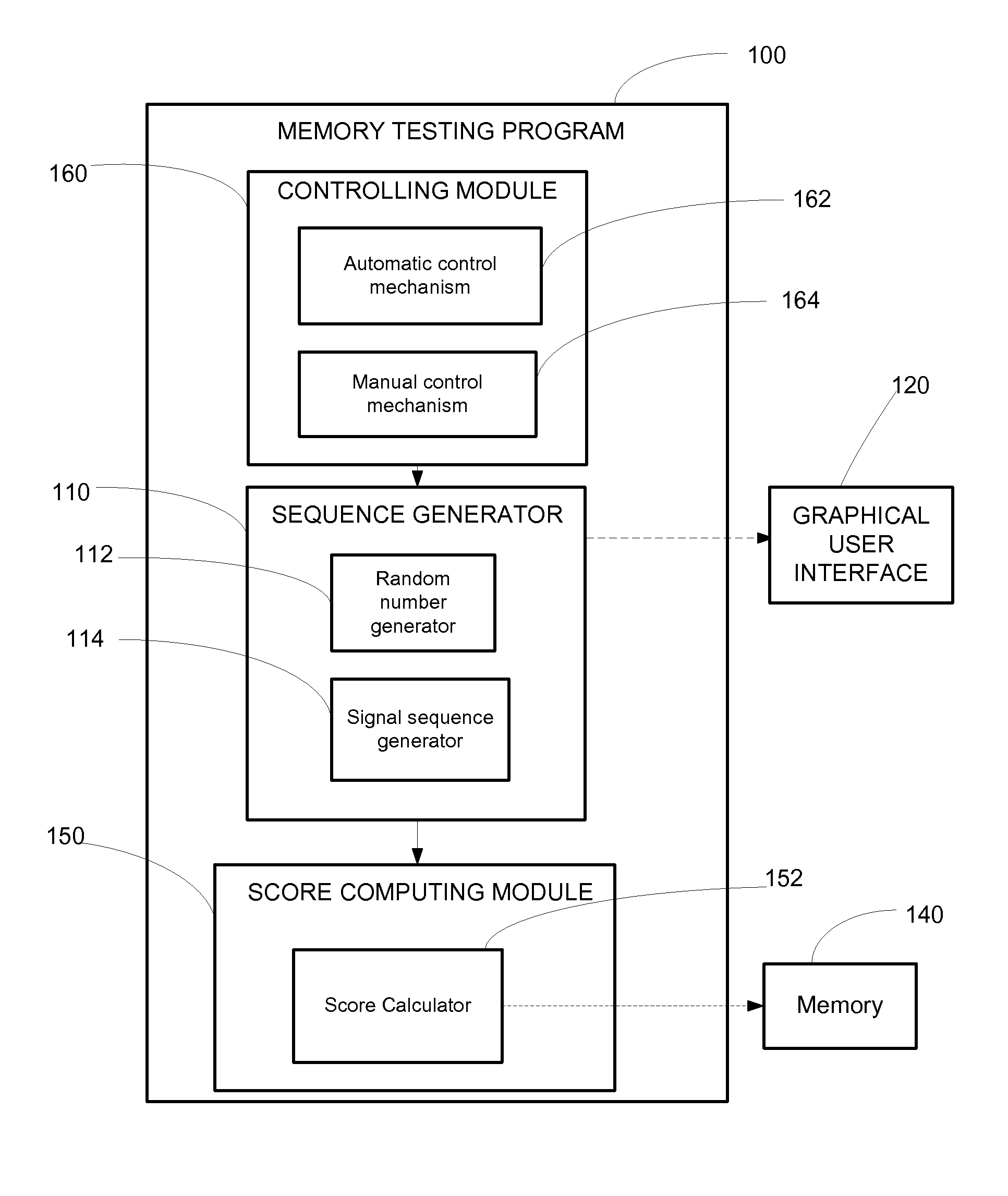System and Method for Testing Memory
a technology of cognitive capacity and memory, applied in the field of computer-implemented cognitive capacity testing systems, can solve the problems of dementia, major public health challenges, and inability to maintain normal social and/or occupational performance, and achieve the effects of reducing the cost of living, and reducing the number of people affected
- Summary
- Abstract
- Description
- Claims
- Application Information
AI Technical Summary
Benefits of technology
Problems solved by technology
Method used
Image
Examples
Embodiment Construction
[0041]Preferred embodiments are illustrated by way of example, and not by way of limitation, in the accompanying drawings and in which like reference numerals refer to similar elements and in which:
[0042]FIG. 1 shows an overview of an embodiment of the invention as disclosed herein.
[0043]FIG. 2 shows a flow diagram illustrating the process flow for working of a memory testing program residing on a client device.
[0044]FIG. 3 shows an overview of the process for calculation of a composite score by the score-computing module.
[0045]FIG. 4A-D illustrates the graphical user interface for an embodiment of a testing program residing on a mobile device.
[0046]FIG. 5A-C show the graphical user interface of different test variants of an embodiment of the testing program residing on a mobile device.
[0047]FIG. 6A-D illustrates yet another embodiment of the invention. The embodiment discloses the functioning of the testing program residing on a computer.
[0048]FIG. 7A-C illustrates yet another embo...
PUM
 Login to View More
Login to View More Abstract
Description
Claims
Application Information
 Login to View More
Login to View More - R&D
- Intellectual Property
- Life Sciences
- Materials
- Tech Scout
- Unparalleled Data Quality
- Higher Quality Content
- 60% Fewer Hallucinations
Browse by: Latest US Patents, China's latest patents, Technical Efficacy Thesaurus, Application Domain, Technology Topic, Popular Technical Reports.
© 2025 PatSnap. All rights reserved.Legal|Privacy policy|Modern Slavery Act Transparency Statement|Sitemap|About US| Contact US: help@patsnap.com



